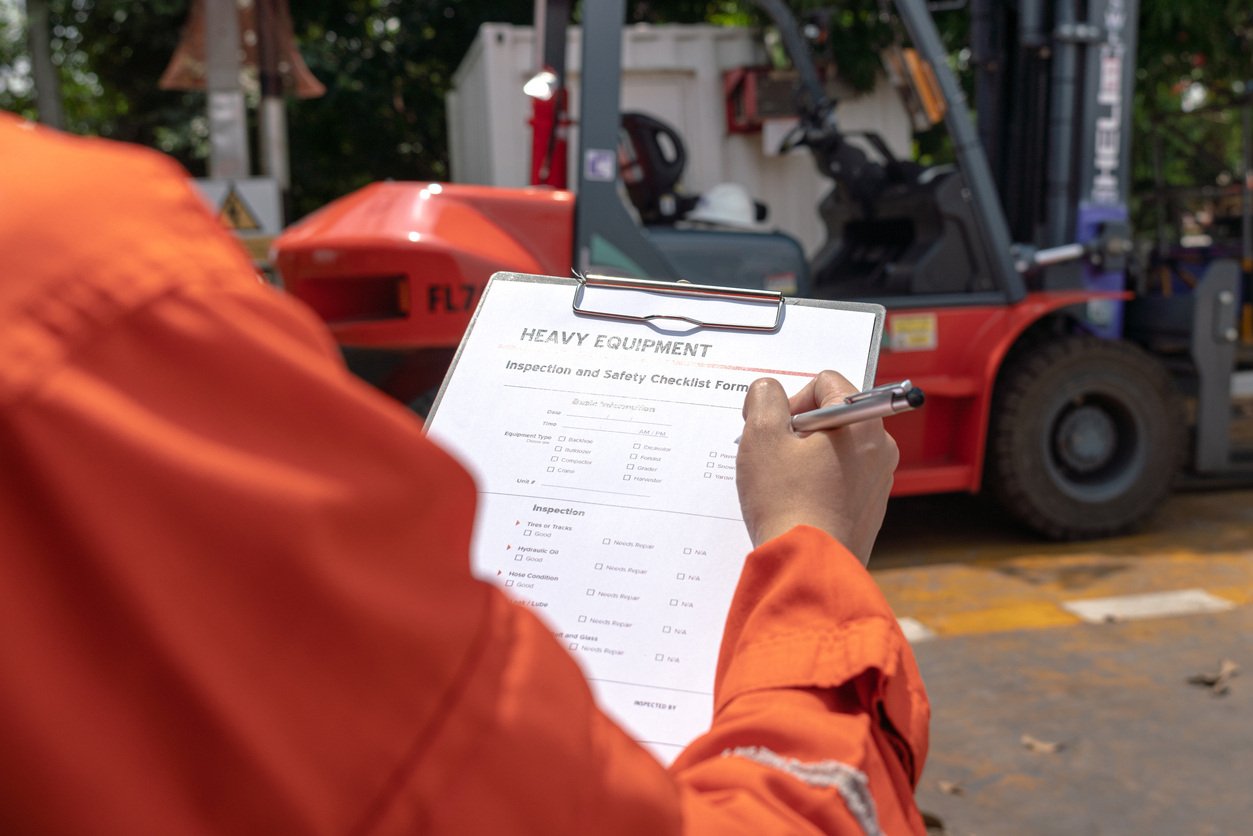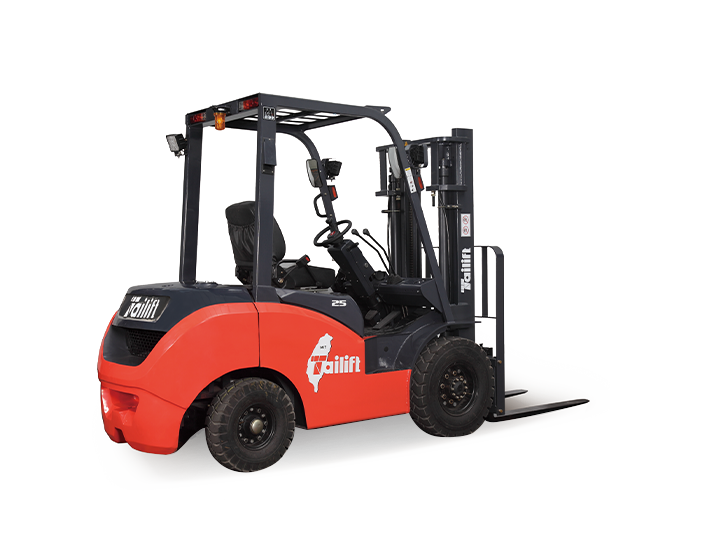.jpg)
Early Signs of Wear in Forklift Components
Forklifts are essential to material handling and industrial operations across Canada. Whether you’re working in a warehouse, distribution center, or manufacturing plant, these machines shoulder the heavy lifting. But even the most robust forklift will show signs of fatigue over time. Ignoring early indicators of wear can result in costly repairs, operational downtime, or worse—accidents that compromise forklift safety. In this blog, we’ll show you how to stay ahead of potential issues by identifying common signs of wear and tear in both electric forklifts and combustion engine forklifts. We’ll also walk you through the essential forklift components to monitor, how small issues can snowball into serious forklift hazards, and when it may be time to consider upgrading your fleet. Let’s explore what to look out for and how you can keep your equipment—and your people—safe.
Forklift Safety: Why Early Detection Matters
Forklift safety starts with awareness. Every day that a forklift operates, it’s exposed to physical stress—lifting loads, navigating tight corners, and dealing with shifts in temperature, terrain, and operator handling. Over time, this leads to wear on essential forklift components like tires, hydraulics, brakes, and masts. The sooner you recognize signs of stress or malfunction, the better your chances of preventing costly failures. Proactive inspections reduce downtime, extend the life of your forklift fleet, and help maintain compliance with Canadian safety standards. Common signs of wear are often visible or detectable through simple changes in how the machine feels or sounds during use. Waiting too long to act can turn a minor repair into a serious forklift hazard.
Warning Signs You Shouldn’t Ignore
It’s important to understand how various forklift components behave when they begin to deteriorate. Each component has its own unique signs of wear—some more obvious than others. Here’s what to keep an eye on:
Tires and Wheels
Forklift tires absorb significant pressure and contact with surfaces during every shift. When tires wear unevenly or lose tread depth, they can compromise balance and handling—especially on combustion engine forklifts used outdoors. Flat spots, cracking, chunking (where pieces of rubber detach), or tearing of the tire sidewall are major red flags. Additionally, if the tires are visibly compressed under normal loads, they’ve likely lost structural integrity and need replacement. Operating on damaged tires can lead to jolting rides, cargo spills, and steering issues. For electric forklifts working on smooth indoor floors, wear may seem less severe, but smooth or balding tires still reduce traction and increase accident risk—especially in slippery or dusty environments.
Hydraulic System
The hydraulic system is the heart of the lifting mechanism. If you notice inconsistent lift speeds, strange hissing sounds, or leaking fluid, there may be issues with the seals, cylinders, or hoses. Any decrease in lifting power or responsiveness could indicate internal wear or contamination in the hydraulic fluid. Not addressing these problems early can lead to total lift failure—which poses a major forklift hazard when transporting heavy loads.
Mast and Chains
The mast is responsible for vertical movement, and its proper function depends on well-maintained mast rollers and chains. Over time, rollers may develop flat spots or loosen, causing jerky lifting. Chains can elongate due to metal fatigue, especially if they aren’t lubricated properly. Visual inspections should focus on signs of rust, kinks, or wear marks. Chains that sag or show more than 3% elongation need to be replaced to prevent lift failure.
Steering and Braking Response
If the forklift feels slow to steer, pulls to one side, or requires unusual force on the wheel, the steering system might be under strain. These issues are often caused by worn-out linkage, fluid leaks, or alignment problems. Similarly, braking systems can degrade with repeated use. A squeaking or grinding sound, slower braking response, or a “spongy” feel underfoot signals that brake pads or hydraulic components may need attention. Malfunctioning brakes are among the most serious forklift safety risks—especially in busy or high-traffic areas.
Battery and Electrical Systems
For electric forklifts, battery health is critical. Early signs of trouble include shortened charge cycles, sluggish performance, corrosion on terminals, and unusual smells during charging. A weak battery can’t provide consistent power and may strain other electrical systems. Forklifts that rely on combustion engines will show different warning signs—like harder engine starts, reduced fuel efficiency, or inconsistent idle. These can point to worn spark plugs, dirty fuel injectors, or clogged air filters.
The Role of Operator Training in Early Wear Detection and Forklift Safety
Operators are the frontline defenders against forklift hazards. Well-trained operators not only drive and maneuver equipment—they are also your best eyes and ears for spotting early signs of wear and tear before they escalate into serious problems. Training programs should teach operators how to perform basic pre-shift inspections, including checking tire condition, hydraulic hoses, mast operation, brakes, and steering response. Operators should learn to recognize abnormal sounds, unusual vibrations, slow lifting, or steering difficulties that could signal component fatigue. More importantly, though, they should be empowered to report these concerns immediately, without hesitation or fear of repercussions. Creating a workplace culture that values safety and encourages open communication improves overall equipment reliability. Beyond technical skills, operator training promotes safer handling techniques that minimize accelerated wear. By investing in ongoing training and involving operators actively in maintenance routines, businesses gain a powerful advantage in early problem detection. This proactive approach helps keep forklifts running safely and efficiently, protecting both people and productivity.
Common Causes of Accelerated Wear
While forklifts are engineered to perform under pressure, misuse and poor maintenance habits accelerate component failure. Overloading, improper turning techniques, uneven surfaces, and skipping regular inspections all put additional stress on vital systems. Another factor is age. Even well-maintained machines have a service lifespan. According to Tailift Canada’s guide to fleet upgrades, if your forklifts are older than seven years, or their repair costs are steadily rising, they may no longer be a cost-effective option. Environmental conditions—like exposure to dust, moisture, or extreme cold—also take a toll. That’s why it’s essential to tailor your maintenance practices based on your facility’s conditions and the type of forklift (electric vs. combustion).
The Real Cost of Ignoring the Signs
Failing to act on signs of wear doesn’t just jeopardize safety—it directly impacts your bottom line. A worn-out mast chain that breaks mid-lift can damage inventory and equipment, while a failed brake system could lead to a collision or injury. Unexpected repairs disrupt your workflow and often involve emergency service rates. Even a single forklift out of commission can delay production timelines or shipping schedules—especially if you don’t have a backup on-site. From a legal standpoint, ignoring known issues can also put your business at risk of liability. In Canada, workplace safety standards require regular equipment inspections and adherence to manufacturer-recommended service intervals. A forklift accident tied to neglected maintenance could result in fines, compensation claims, or worse.
Best Practices for Staying Ahead of Forklift Wear
To keep your fleet safe and efficient, make routine inspection and maintenance of your electric and combustion engine forklifts a top priority. Start by creating a schedule for daily, weekly, and monthly checks. Assign trained operators or maintenance staff to inspect key areas—without over-relying on visual checks alone. Investing in operator training pays off, too. Operators who know what signs to look for are better equipped to report issues early. Encourage a culture where speaking up about odd sounds, smells, or handling issues is the norm—not the exception. Tracking maintenance history digitally can help you spot patterns in wear and plan for proactive part replacements before failure occurs. And when replacement is unavoidable, know where to turn. Use Tailift Canada’s dealer locator to connect with certified service providers and OEM parts that ensure compatibility and longevity.
When It’s Time to Consider an Upgrade
There comes a point when the cost of keeping an aging forklift running outweighs the benefit. If your team is constantly dealing with breakdowns or delays due to worn-out machines, it might be time to consider upgrading your fleet. Modern forklifts—especially electric models—offer improved energy efficiency, enhanced safety features, and lower maintenance demands. Tailift Canada’s blog on upgrading your fleet outlines key signs it’s time to move on, including rising maintenance costs, parts scarcity, and operator complaints. An updated fleet also demonstrates a commitment to workplace safety and employee wellbeing—a value that goes beyond the warehouse floor.
Proactive Maintenance Pays Off
Forklifts work hard—but they aren’t invincible. Staying ahead of wear and tear is one of the best ways to protect your people, your products, and your productivity. Whether you operate electric forklifts indoors or combustion engine forklifts outdoors, attention to early warning signs can prevent small problems from escalating into dangerous forklift hazards. From tire wear to steering issues and hydraulic leaks, every component has a story to tell. Listening early—and responding quickly—makes all the difference. At Tailift Canada, we’re here to help you make smart, safe choices for your business. Whether you're maintaining your current fleet or considering an upgrade, connect with your local Tailift dealer to get expert support and solutions tailored to your needs.

